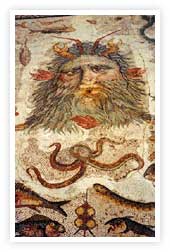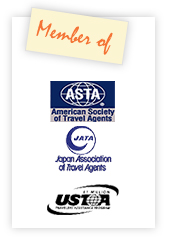Roman Tunisia
"Provincia Africa"
After Punic Carthage fell to the Romans in 146 BC, the land which is today Tunisia was known as "Provincia Africa".
This thriving province was so vital to the economy and culture of the Roman Empire that it would give its name to an entire continent. |
 |
 |
| An exquisite Roman work |
Wheat and Olive Oil for an Empire
The agricultural wealth of Africa produced fine duro wheat and by the first Century AD was supplying two thirds of the needs of the entire Roman Empire.
Roman trade regulations limited Africa's exports to wheat until the second century, when olive oil started flowing into the European Roman provinces.
Within a single century, olive cultivation had expanded to the extent that it supplied two thirds of imperial requirements.
Olive oil for the Roman table and for lamps which lighted homes and temples brought unparalleled wealth to the land of Tunisia.
Luxurious Provincial Towns

The income from olive production permitted splendid towns with luxurious houses to spring up in the agricultural heartland.
Today the ruins of these towns stand in splendid isolation still surrounded by fields of wheat and orchards of olive trees.
Since villas in agricultural areas were much larger than those of the cities, the inhabitants of ancient Tunisia filled floors and walls with exceptionally fine mosaics. Among the most beautiful mosaics the Empire witnessed are in the houses of El Jem. The affluence of this small town, today still dominated by a coliseum nearly the size of that of Rome, was based on olive oil.
Aqueduct and Temples
 |
| Fountain mosaic at Utica |
Tunisia's Roman towns - among them Carthage, Zaghouan, Thurbo Majus, Dougga, Makthar, Bulla Regia, Sbeitla, Oudna, Haidra, Chemtou - were characterized not only by elegant living but also by massive public works and important civic and religious structures.
The Emperor Hadrian initiated work on the aqueduct which brought water nearly 100 kilometers, from the springs of Mount Zaghouan to the cisterns of Carthage. This majestic aqueduct was maintained by the Arabs and parts of it were used into the Twentieth Century.
The fourm of Sbetlia, known to the Romans as Sufetula, is dominated by three particularly well-preserved temples that were built during the Second Century to honor Juno, Jupiter, and Minerva.
|

